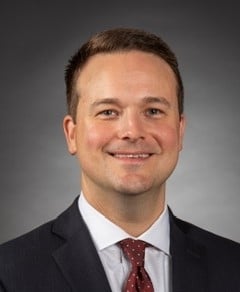You have /5 articles left.
Sign up for a free account or log in.
Jason Penry reached out after reading my piece “Endowments, 1990 to 2055.” As I’m curious about the world of institutional advancement, I was hoping that Jason would be willing to answer my questions, and he graciously agreed.

Q: Tell us about your educational and professional background and your current work.
A: Penry Advisors was founded in 2022 to help university partners raise more money and develop fundraising talent. My background includes 20 years of experience consulting for universities from coast to coast while serving in leadership roles at multiple universities.
Previously, I held the James Aston University Chair in Development at Texas A&M University after spending over a decade in university leadership as vice chancellor and vice president at Arkansas State University and Angelo State University in Texas. Before those appointments, I was fortunate to lead the Oklahoma State University POSSE, the official fundraising organization for athletics. I am forever grateful to the people I worked with and the lessons learned while being around the top donor (Boone Pickens) and top fundraiser (Mike Holder) in the history of college athletics.
In a role unrelated to fundraising, I was blessed to spearhead a collaborative effort at Arkansas State to open the first medical school in Arkansas in over 100 years. After hard work from so many, the medical school opened in 2016. Our founding dean, Dr. Barbara Ross-Lee, was the first African American female dean of a United States medical school.
I received a Ph.D. in higher education administration from Texas A&M University and earned a master’s degree from Louisiana State University in Baton Rouge and a bachelor’s degree from LSU Shreveport, where I proudly served as student body president and was a letterman on the baseball team.
Q: What is it about university budgets and endowments that is not well understood within or outside academia?
A: For decades, inflation in higher education has been a major issue. Due to a convergence of factors that directly affect supply and demand, it seems this is such a pivotal decade for higher education. My prediction is that the regional publics, particularly those in rural settings, that adapt and have a focus on building stronger partnerships with area industries will thrive.
A university president I served alongside became a commissioner of higher education in Louisiana. He introduced me to six state commissioners. During interviews in 2018, they discussed the long-term view of the finances of public higher education in their states. It was not a rosy picture. The big takeaway from five years ago was that it is extremely apparent that the financial challenges are not understated. The fiscal challenges are expected to increase, especially among the enrollment-driven, regionally based universities.
As budget issues intensify, increased fundraising will likely be viewed as a solution. Most regional university presidents and trustees need to view university development as icing on the cake, not the cake itself. From all research I have seen, the makeup of the prospect pool is vastly different from elite privates and from flagships. Also, it is important for higher ed leaders to remember that fundraising takes time; patience and training is often needed for your fundraisers. Realistic expectations are also needed to prevent burnout and frustration.
I will add that typically fundraising and endowments are not a major solution to operating budgets. Gifts at a size that are needed for operating budget solutions are typically restricted to a specific purpose, such as scholarships in engineering or professorships in health sciences. Endowments don’t give chief financial officers much operating budget flexibility.
Q: The trend in university endowments seems to be one of concentrated wealth and stratification. A relative handful of wealthy schools are getting richer, while most colleges and universities are dealing with precarious finances. What, if anything, would you like to see to counteract this narrative?
A: With my background, I typically view giving in higher education from the lens of regional publics. Many don’t realize that most of the public universities in the U.S. News & World Report rankings are classified as regional universities. These universities may not grab many headlines; however, they have long served our states and regions.
As the conversation about debt and the value of higher education intensifies, I am concerned public regional colleges in rural settings might be the most susceptible to decline. Many regionally focused universities do not have consistently growing student enrollment, which many flagships enjoy, or robust endowments.
I would love to see more stories of the impact regional universities have had on our country. Until an uptick in national coverage in recent years, little attention was given to this important group. Regional publics provide life-changing opportunities to their communities, especially to many first-generation students. Perhaps with an increase in nonprofit newsrooms, not obsessed with clicks on the web, a stronger voice will develop for regional publics.
Big gifts can make all the difference for regional publics. With positive news coverage and a better understanding of the great impact of regional publics, it is my hope that open-minded philanthropists will realize that their influence on society can be incredibly impactful and make a generational difference in these universities. I hope that more philanthropists come to realize that the expected outcomes and impact of giving $10 million to a rural university like Arkansas State University, compared to an elite private institution, can be transformational.




